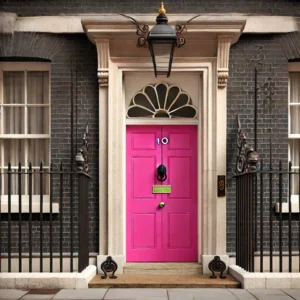You would have to be living in a cave to miss the hype around transferring professional practices into employee ownership. There have been numerous fads in professional services over the last thirty years – going public, private equity investment, and the + sign, to name but a few. In building design – Make, Zaha Hadid, Hopkins and Hawkins\Brown have made the change. Is this a genuine revolution or just another fad?
Why employee ownership?
Before I answer this, we need to understand the history of employee ownership. Until 2018, an Employee Ownership Trust (EOT) was a fairly niche structure. The John Lewis Partnership was very much the standard bearer for this after John Spedan Lewis transferred the business to a trust for the benefit of employees in 1929. RSHP was perhaps the most high profile example of this in professional services – Richard Rogers and his co-founders generously decided in 1990 to transfer their business to a charity to ensure that profits were split between directors, employees and grants to a wide range of charitable beneficiaries.
In 2012, the coalition government commissioned a paper on widening employee participation in business from Graham Nuttall, a lawyer specialising in this area. His recommendations formed the basis for the introduction in 2014 of a series of tax incentives for business owners and businesses moving into employee ownership.
The main incentive introduced was a 100% exemption from capital gains tax for the disposal of a business into employee ownership, so long as control passed to a trust established for the purpose of owning the business (an EOT). There are secondary reliefs which allow for small annual bonuses to be paid to staff free from national insurance.
So what happened when these measures were introduced? Well, initially nothing. The tax saving might be great if you are dealing with a manufacturing business which is worth millions of pounds but for professional practices the savings are not obvious.
EOTs for professional practices?
Many professional practices are what are known as ‘naked in naked out’ businesses where incoming partners/shareholders are only required to contribute money towards the working capital of the practice and outgoing partners/shareholders are only paid their share of the businesses balance sheet when they retire, rather than trying to sell on the business for a large sum.
This type of arrangement is popular with law firms and architects’ practices where partners/shareholders try to maximise their earnings during their career rather than on exit. Exempting the sale of your stake in the business from tax when the amounts involved are modest and the usual rate of tax is just 10% does not justify the professional fees involved in setting up the EOT.
Of course, accountants and lawyers promoting EOTs have been trying to find ways of making them more attractive and the solution they have found appears to be the ‘early sale’. Take a successful small architects’ practice where the founders have (say) £400,000 each of working capital locked up in the business. They would expect to receive this money on retirement. They earn £150,000 each a year.
The EOT advisor tells them to value the whole business at £2m which is £1.2m more than their combined working capital amounts. They will each receive an additional £600,000 from the business which is equivalent to 4 years’ profits. To make this work they must ‘retire’ from the business 4 years early and receive their £600,000 plus the £400,000 they were always going to take out over (say) 5 years. Effectively they will shed the tax on 4 years’ earnings.
The saving per owner in this example potentially is:
| Gross amount | Income Tax/CGT | |
| Year 1 salary | 150,000 | £43,630 |
| Year 2 salary | 150,000 | £43,630 |
| Year 3 salary | 150,000 | £43,630 |
| Year 4 salary | 150,000 | £43,630 |
| Retirement payment | 400,000 | £39,400 |
| Total tax | £213,920 |
The theory here is that the employees who inherit the business are no worse off than they would have been – the owners are retiring at the same time they had intended to and have received the same amount of money from the business but have avoided a substantial amount of income tax. Of course there are substantial professional fees for putting the structure in place but these will be a small proportion of the saving.
What are the problems?
Do the next tier of management in the business actually want this structure? Ambitious managers will aspire to be owners of the business with the rewards that entails – forcing them to share management and profits with all employees may demotivate them or even cause them to look for opportunities elsewhere.
Also, once a business is locked in to an EOT there are very limited options for tax efficient profit extraction as most remuneration will be paid as salary and subject to income tax, employees’ and employers’ national insurance. Over time the business will pay far more in additional PAYE taxes than the owners saved by putting the business in to this structure.
Finally, it is not clear that the arrangement described is even legal. HMRC might view this as a blatant attempt to convert income into capital and attack it. There is also the fiduciary angle – EOT trustees have an obligation not to overpay for the business when negotiating the purchase or they could face claims from the employees. Many, including the Chartered Institute of Taxation, are uncomfortable with the extent to which former business owners are wielding influence as trustees in newly created EOTs.
But employee ownership will be right for some!
I don’t want to suggest though that EOTs are just being used for questionable tax advantages. There are clearly businesses such as RSHP and Zaha Hadid Architects that are thriving in employee ownership. There does seem to be a theme – larger businesses that take on more complex clients and that necessarily need larger teams seem to be more suited to the EOT structure. Perhaps the formal management processes and systems that allow them to thrive commercially will also keep the business on an even keel when the founders or current equity owners exit.
Another factor that makes a transition to employee ownership more likely to succeed is the agreement of the next tier within the business that this the right strategy and a commitment to preparing for it several years in advance.
So if you are a founder or owner of a £5m+ turnover professional practice and considering whether an EOT is right for you, talk to us. As for fads – I think it’s too early to tell if the EOT will outlive the + sign or not…





